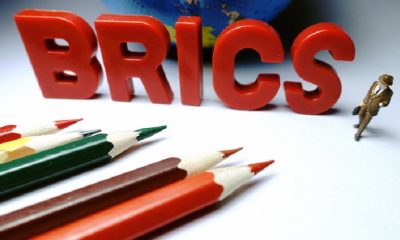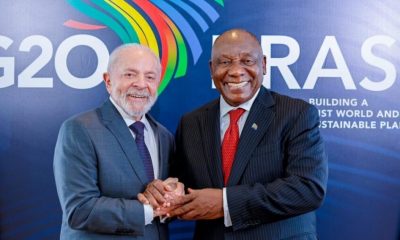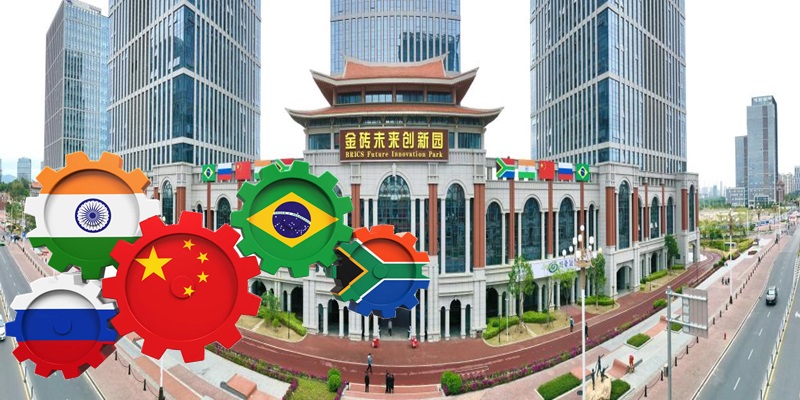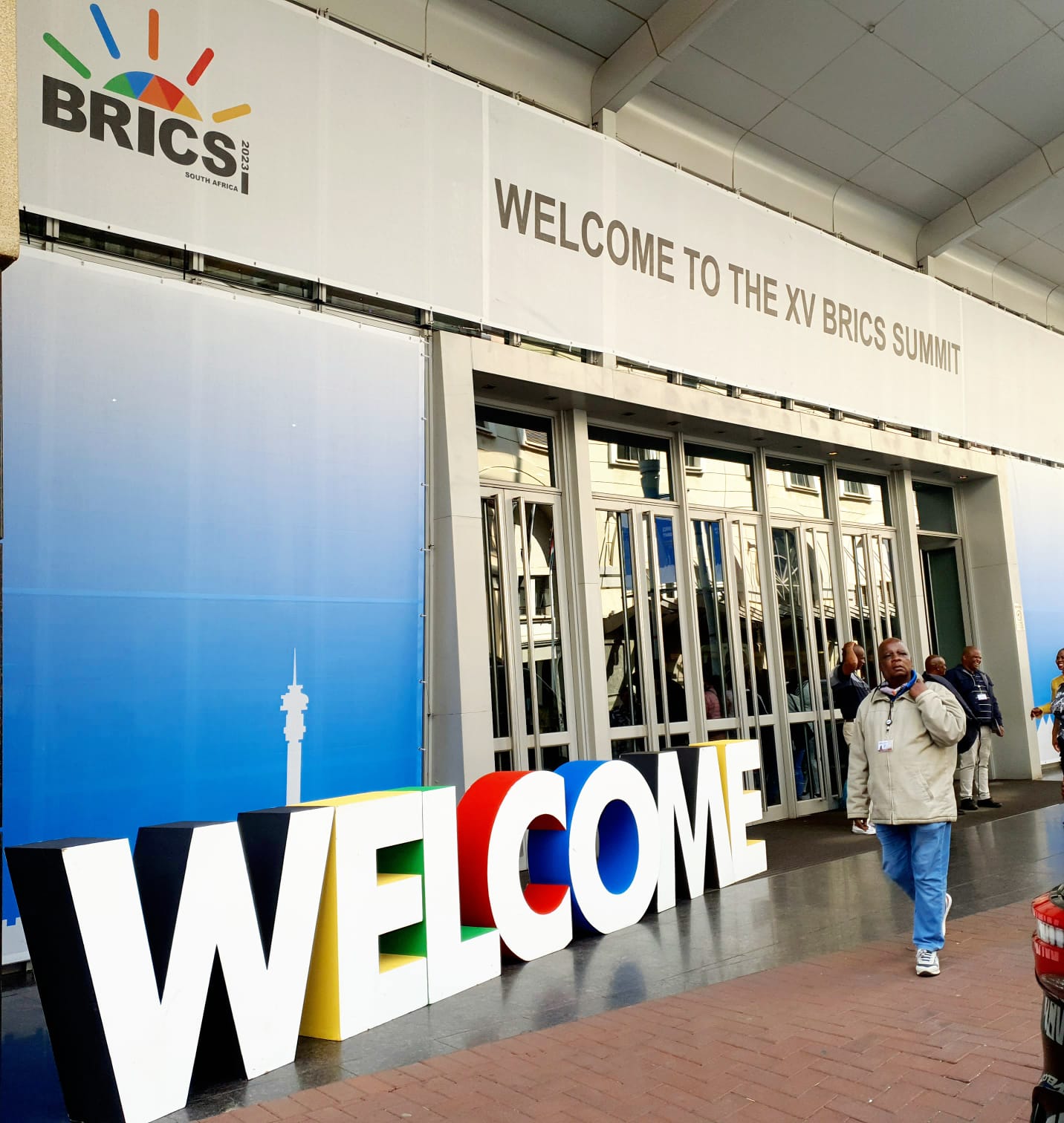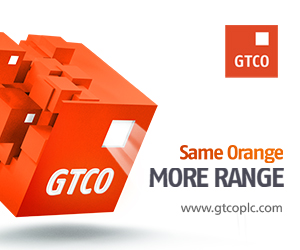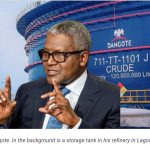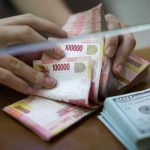World
BRICS+ Heading Towards Strategic Enlargement and Consolidating Multipolar World
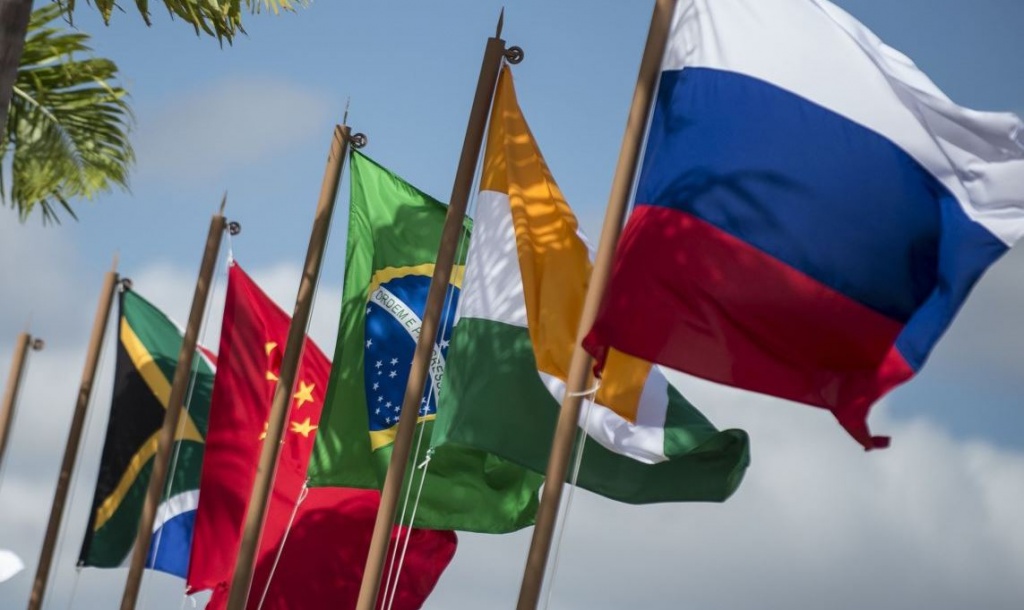
By Kestér Kenn Klomegâh
The question yet stands: what potential countries with high aspirations are gearing up to join BRICS+, an informal association of developing economies, during the forthcoming summit this October 22-24? In the context of preparations for the BRICS+ summit, a number of significant issues, including the expansion of the association, were reviewed and considered at the sidelines of the 79th session of the United Nations General Assembly in New York. Russian Foreign Minister Sergey Lavrov reiterated “the creation of a category of partner states” for the current association of BRICS+. Lavrov had already indicated the “suspension” of membership into BRICS+ and further emphasized that “the ministers reviewed the efforts to coordinate the modalities of the new category, BRICS partner countries” as far back in June 2024 during the BRICS Foreign Ministers Council in Russia’s Nizhny Novgorod.
In late September in New York, Lavrov told a news conference following his participation in the high-level week of the 79th session of the UN General Assembly that BRICS+ considered further expansion inappropriate for now, the current BRICS member countries now considered it not feasible to admit new members, but countries expressing readiness would only become supporting partners and would maintain permanent contacts. These partner members could use BRICS+ to pursue the common goals of fighting United States dominance and Western hegemony. BRICS is also steadily working towards creating a multipolar world.
“As for the prospects for BRICS expansion, at this stage, all affiliated countries consider it reasonable not to make new decisions for the time being and to adapt the organization, an association of like-minded members. There were five of us, now there are ten. Of course, this requires some kind of habituation and smooth entry of new members into the work in line with the traditions that the quintet has developed over the years,” Lavrov said.
On the other hand, the transition towards a new economic architecture, characterized by de-dollarization and diversification of global financial frameworks, presents immense opportunities and challenges for the Global South. Russia’s engagements with mostly common geopolitical like-minded countries in Asia, Africa and Latin America regions underscore the strategic importance of the future development of BRICS+.
Meanwhile, BRICS+ rising against United States hegemony and dominance, ultimately helps create the situation or conditions for China to emerge as the global economic power. The ultimate result – BRICS+ is rather driving China, with an estimated population of 1.5 billion, to establish a global presence, Russia has been cooperating within the external economic parameters, especially with China and India.
Under Russia’s BRICS presidency which began in January 2024, Ethiopia, Egypt, Iran, Saudi Arabia and the United Arab Emirates became the second wave of the newest members to join BRICS. South Africa ascended in 2011 under China’s initiative. In 2015, BRICS established the New Development Bank (NDB), the only financial instrument to compete with other multilateral institutions such as the International Monetary Bank and the World Bank. While these operate worldwide, the NDB has limited scope of operations over the past decade. Nevertheless, NDB has made significant headway, at least, in consolidating its position and has also taken a few steps in raising the possibility of forging sustainable economic cooperation and collaborating on investment partnerships among member states. According to media reports, NDB primarily intended to pursue a flexible financial framework to create a fairer, more equitable system, in contrast to IMF and the World Bank. By advocating for these essential reforms, NDB portrays itself as the main instrument for reshaping the financial landscape for the Global South.
As often emphasized, BRICS+ functions on the basis of consensus. The consensus principle primarily aims at finding agreements that reflect the mutual accord of all participants. BRICS+ is an informal association of emerging economies based on a respectful attitude towards each other and on mutual consideration to promote collaboration based on a balance of interests and strictly adhering to the principle of the sovereign equality of states and non-interference in each other’s internal affairs. Moreover, its transforming structure remains an emerging force for a new global architecture.
In these previous years, BRICS+ has been emerging as a key player in this world and has the potential to drive significant economic growth and development but BRICS+ and the Global South collaboration face the challenges of diversity in politics, economy and culture. This is evidently noticeable in the dynamism of tackling complex issues such as economic development, trade, climate change, and global governance. The degree of variations significantly in terms of their level of economic development and political influence could complicate efforts to create a cohesive alliance, according to experts’ interpretations.
Leaders will decide on BRICS membership expansion on the basis of full consultation and consensus. The following countries have either expressed interest in joining BRICS or have already applied for membership:
(i) AFRICA
Algeria: In terms of market size, Algeria has the tenth-largest proven natural gas reserves globally, is the world’s sixth-largest gas exporter, and has the world’s third-largest untapped shale gas resources.
According to reports, Africa States have submitted applications: Angola, Burkina Faso, Cameroon, Central African Republic, Congo, DR Congo, Ghana, Kenya, Libya, Mali Republic and Niger Republic.
Nigeria: Nigeria’s Foreign Minister Yusuf Tuggar has announced that the country intends to become a member of the BRICS group of nations within the next two years. Nigeria has a GDP of $448 billion, a population of 213 million and a GDP per capita of $2,500. It has the world’s 9th largest gas reserves and significant oil reserves.
Senegal: It is a medium-capacity gold mining and energy player, with reserves in gold, oil, and gas. The energy industry is at a growth stage as reserves have only recently been found. The energy-hungry BRICS nations will be keen to secure their supplies.
Sudan: Sudan’s top five export markets are 100% BRICS – China, Russia, Saudi Arabia, India, and the UAE. Sudan also has regional clout. It is Africa’s third-largest country by area and is a member of the League of Arab States (LAS). Should Sudan join the BRICS it would give the group complete control of the Red Sea supply routes
East Africa: South Sudan, Tanzania, Tunisia, Uganda and Zimbabwe.
(ii) AMERICAS
Bolivia: Asset-rich but relatively poor, Bolivia has the fastest GDP growth rate in Latin America
There are also Chile, Colombia and Costa Rica.
Cuba: Cuba’s sanctions defiance has long made it a favourite of China and Russia when wanting to annoy the United States. It also has significant agreements with China and Russia, is a member of the BRI and has significant Caribbean and LatAm influence.
Ecuador: Ecuador is negotiating Free Trade Agreements with both China and the Eurasian Economic Union. It would make sense to substitute these with a looser BRICS arrangement in El Salvador, Guatemala and Honduras.
Nicaragua: Nicaragua is a mining player and the leading gold-producing country in Central America. It has a Free Trade Agreement with the ALBA bloc and is an influential player in the Caribbean.
El Salvador, Guatemala, Honduras, Panama and Peru.
Uruguay: Uruguay has joined the BRICS New Development Bank – a sure sign that official BRICS membership is pending.
Venezuela: Another outlier, but its energy reserves and political stance fit well with China and Russia’s needs.
(iii) ASIA
Afghanistan: An outlier, but Afghanistan has significant resources and is a member of the BRI. Diplomatic changes are required, but China, India and Russia are all keen to see redevelopment in the country once political stability can be secured.
Azerbaijan and Bahrain
Bangladesh: Bangladesh is one of the world’s top five fastest-growing economies and is undergoing significant infrastructure and trade development reforms. It shares a 4,100 km border with India.
Indonesia: One of Asia’s leading economies, Indonesia’s potential has again been raised to join BRICS. In July 2023, Jakarta accepted an invitation to participate in the 2023 BRICS summit.
Kazakhstan: Kazakhstan’s economy is highly dependent on oil and related products. In addition to oil, its main export commodities include natural gas, ferrous metals, copper, aluminium, zinc and uranium.
Others include Iraq, Kuwait, Laos, Malaysia, Myanmar
Mongolia: Mongolia is both a problem and a solution, while geographically attractive. It requires extensive investment in its energy sector; yet is resource-rich and a transit point between Russia, Kazakhstan and China. It is not a member of any trade bloc, with a looser BRICS arrangement better suited to maintaining its regional impartiality.
Pakistan: Pakistan has filed an application to join the BRICS group of nations in 2024 and is counting on Russia’s assistance during the membership process, the country’s newly appointed Ambassador to Russia Muhammad Khalid Jamali has stated.
Sri Lanka: Sri Lanka isn’t keen on opening up its markets yet has significant economic problems. China is interested in port and Indian Ocean access while Russian tourism investments are increasing. A BRICS agreement would be loose enough to satisfy all concerns, while India will want to keep an eye on it.
Turkiye: Turkiye’s trade figures with the current and most of the upcoming BRICS members show significant growth. Getting access to BRICS NDB funding may also prove attractive for Ankara as talks are expected across a number of issues.
Thailand: Thailand is one of ASEAN’s largest economies, via ASEAN it has additional Free Trade Agreements with Australia, New Zealand, Japan, South Korea, China, Hong Kong and India, and agreements with Chile, and Peru. Thailand is also a signatory to the RCEP FTA between ASEAN and Australia, China, Japan, New Zealand, and South Korea.
Uzbekistan: Uzbekistan is one of Central Asia’s fastest-growing economies, yet it is hampered by being double-landlocked. Membership in BRICS would give it market access to China, Europe, and the rest of Asia in a more protected manner.
These have also shown potential interest: Syria, Turkmenistan, Tajikistan, Vietnam and Yemen.
(iv) EUROPE
Azerbaijan and Belarus: In the former Soviet space, Belarus and Azerbaijan have recently expressed their synonymized interest in leveraging the BRICS platform. Based on the historical fact that Belarus and Russia have already formed a Union State, Belarusian President Alexander Lukashenko irreversibly promised Belarus’ ascension into BRICS.
“Azerbaijan has filed an official application for joining BRICS,” Azerbaijan’s news agency quoted Foreign Ministry’s spokesman, Aykhan Hajizada. Baku’s intention to jump on the bandwagon of BRICS is reflected in the joint declaration on strategic partnership between Azerbaijan and China, which was signed on the sidelines of the Shanghai Cooperation Organization (SCO) summit in Astana in early July.
That, however, Belarus sees BRICS as a basis for economic development and is ready to join integration processes within the framework of the informal association. “We are interested in getting involved in integration processes in that space. BRICS is another footing to help us maintain balance and economic stability,” BelTA agency quoted Lukashenko as emphatically asserting.
Notably, Azerbaijan and Belarus are former Soviet republics, with common historical backgrounds despite the stark indications of disparity in approach to current politics and economic development, much still remains uniquely common in cultural practice and in society. Undoubtedly, both the older and current generations have a comprehensive understanding of Soviet history and culture. Azerbaijan and Belarus becoming BRICS members will fortify the SCO operations in the region. Therefore, Azerbaijan and Belarus governments and their state institutions such as the cabinet, legislature and judiciary, would endorse aligning to BRICS, and its contribution towards shaping a new post-Soviet space within the framework of an emerging new geopolitical reality.
Meanwhile, as Sergey Lavrov noted “the weight, prestige and role of an individual candidate country and, of course, its position in the international arena” would be taken into account in decision-making on accepting new members to expand, a bit later, BRICS. An updated list of candidate countries for BRICS membership, which was “suspended” for the time being, would still be prepared for consideration at the October summit under Russia’s chairmanship.
Amid the heightening of geopolitical changes, the forthcoming BRICS summit in Kazan on October 22-24 presents an opportunity, most possibly, to determine and review critical pending issues including the association’s structure, and membership. Ensuring qualitative geopolitical influence must be the key priority. The political and economic impact should be paramount instead of anti-western rhetoric and stringent confrontation. As the situation stands, the numerical strength of BRICS is equally important as well as creating the necessary instruments and taking step-by-step comprehensive measures for promoting global peace and future development-oriented aspirations. Despite positive achievements and future expectations, challenges remain. Perhaps, some of the new members with political divergences have already begun to manipulate their national interest and therefore discredit BRICS as demonstrated by Ethiopia and Egypt at the UN General Assembly in New York.
World
TikTok Signs Deal to Avoid US Ban

By Adedapo Adesanya
Social media platform, TikTok’s Chinese owner ByteDance has signed binding agreements with United States and global investors to operate its business in America.
Half of the joint venture will be owned by a group of investors, including Oracle, Silver Lake and the Emirati investment firm MGX, according to a memo sent by chief executive, Mr Shou Zi Chew.
The deal, which is set to close on January 22, 2026 would end years of efforts by the US government to force ByteDance to sell its US operations over national security concerns.
It is in line with a deal unveiled in September, when US President Donald Trump delayed the enforcement of a law that would ban the app unless it was sold.
In the memo, TikTok said the deal will enable “over 170 million Americans to continue discovering a world of endless possibilities as part of a vital global community”.
Under the agreement, ByteDance will retain 19.9 per cent of the business, while Oracle, Silver Lake and Abu Dhabi-based MGX will hold 15 per cent each.
Another 30.1 per cent will be held by affiliates of existing ByteDance investors, according to the memo.
The White House previously said that Oracle, which was co-founded by President Trump’s supporter Larry Ellison, will license TikTok’s recommendation algorithm as part of the deal.
The deal comes after a series of delays.
Business Post reported in April 2024 that the administration of President Joe Biden passed a law to ban the app over national security concerns, unless it was sold.
The law was set to go into effect on January 20, 2025 but was pushed back multiple times by President Trump, while his administration worked out a deal to transfer ownership.
President Trump said in September that he had spoken on the phone to China’s President Xi Jinping, who he said had given the deal the go ahead.
The platform’s future remained unclear after the leaders met face to face in October.
The app’s fate was clouded by ongoing tensions between the two nations on trade and other matters.
World
United States, Russia Resolving Trade Issues, Seeking New Business Opportunities
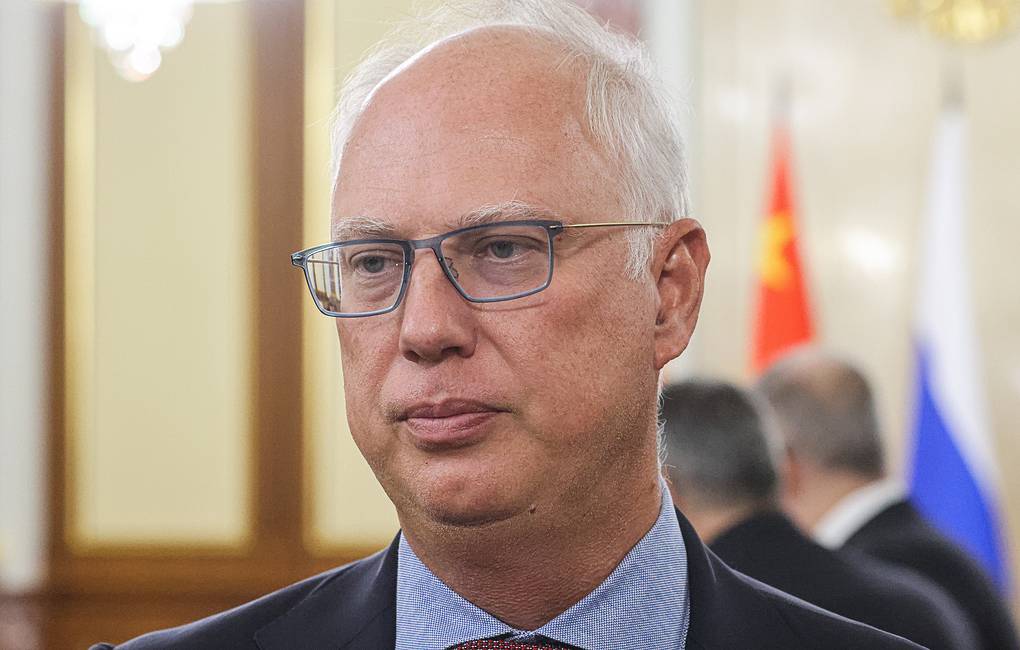
By Kestér Kenn Klomegâh
Despite the complexities posed by Russia-Ukraine crisis, United States has been taking conscious steps to improve commercial relations with Russia. Unsurprisingly, Russia, on the other hand, is also moving to restore and normalise its diplomacy, negotiating for direct connections of air-routes and passionate permission to return its diplomats back to Washington and New York.
In the latest developments, Kirill Dmitriev, Chief Executive Officer of the Russian Direct Investment Fund (RDIF), has been appointed as Russian President’s Special Envoy to United States. This marked an important milestone towards raising bilateral investment and economic cooperation. Russian President Vladimir Putin tasked him to exclusively promote business dialogue between the two countries, and further to negotiate for the return of U.S. business enterprises. According to authentic reports, United States businesses lost $300+ bn during this Russia-Ukraine crisis, while Russia’s estimated 1,500 diplomats were asked to return to Moscow.
Strategically in late November 2025, the American Chamber of Commerce in Russia (AmCham) has awarded Kirill Dmitriev, praised him for calculated efforts in promoting positive dialogue between the United States and Russia within the framework decreed by President Vladimir Putin. Chief Executive Officer of Russian Direct Investment Fund (RDIF) Kirill Dmitriev is the Special Representative of the Russian President for Economic Cooperation with Foreign Countries. Since his appointment, his primary focus has been on United States.
“Received an American Chamber of Commerce award ‘For leadership in fostering the US-Russia dialogue,’” Dmitriev wrote on his X page, in late November, 2025. According to Dmitriev, more than 150 US companies are currently operating in Russia, with more than 70% of them being present on the Russian market for over 25 years.
In addition, Chamber President Sergey Katyrin and American Chamber of Commerce in Russia (AmCham) President Robert Agee have also been discussing alternatives pathways to raise bilateral business cooperation. Both have held series of meetings throughout this year, indicating the the importance of sustaining relations as previously. Expectedly, the Roscongress Foundation has been offered its platforms during St. Petersburg International Economic (SPIEF) for the American Chamber of Commerce (AmCham).
On December 9, Sergey Katyrin and Robert Agee noted that, despite existing problems and non-economic obstacles, the business communities of Russia and the United States proceed from the necessity of maintaining professional dialogue. Despite the worsening geopolitical conditions, Sergey Katyrin and Robert Agee noted the importance of preserving stable channels of trade and pragmatic prospects for economic cooperation. These will further serve as a stabilizing factor and an instrument for building mutual trust at the level of business circles, industry associations, and the expert community.
The American Chamber of Commerce (AmCham) will be working in the system of the Chamber of Commerce and Industry (CCI) in the Russian Federation, which currently comprises 57,000 legal entities, 130 regional chambers and a combined network of representative offices covering more than 350 points of presence.
According to reports obtained by this article author from the AmCham, promising sectors for Russian-American economic cooperation include healthcare and the medical industry, civil aviation, communications/telecom, natural resource extraction, and energy/energy equipment. The United States and Russia have, more or less, agreed to continue coordinating their work to facilitate the formation of a more favorable environment for Russian and American businesses, reduce risks, and strengthen business ties. Following the American-Russian Dialogue, a joint statement and working documents were adopted.
World
Reviewing the Dynamics of Indian–Russian Business Partnership
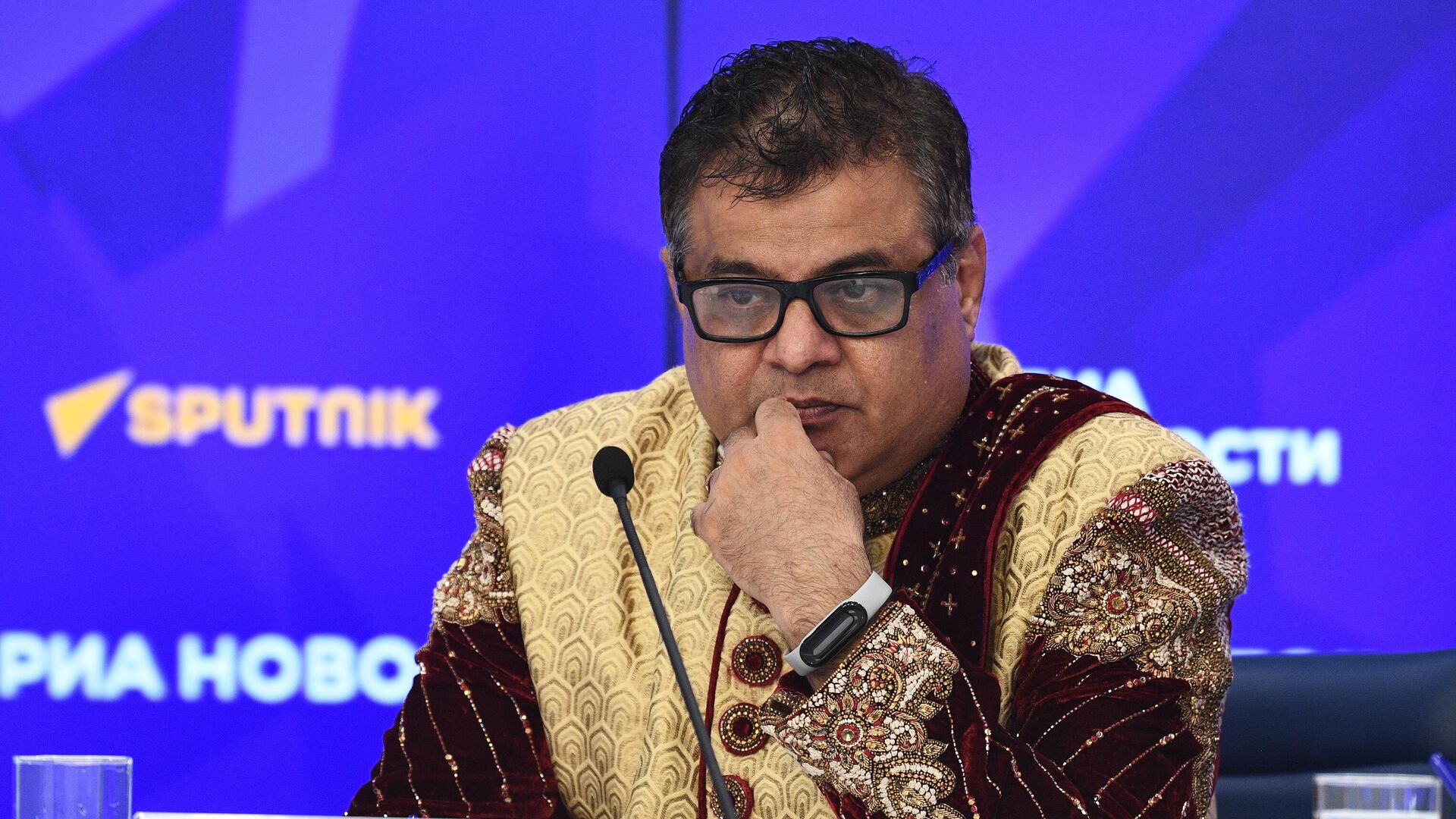
By Kestér Kenn Klomegâh
The Executive President of the Indian Business Alliance (IBA), Sammy Manoj Kotwani, discusses the landmark moment in deepening Russian-Indian collaboration. Kotwani explains the groundbreaking insights into President Vladimir Putin’s working visit to India, the emerging opportunities and pathways for future cooperation, especially for the two-sided economic collaboration. Follow Sammy Manoj Kotwani’s discussions here:
Interpretation of the latest development in Russian-Indian relations
From my viewpoint in Moscow, this visit has effectively opened a new operational chapter in what has always been described as a “Special and Privileged Strategic Partnership.” It did not just reaffirm political goodwill; it translated that goodwill into a structured economic roadmap through Programme 2030, a clear target to take bilateral trade to around USD 100 billion by 2030, and concrete sectoral priorities: energy, nuclear cooperation, critical minerals, manufacturing, connectivity, fertilizers, and labour mobility.
On the ground, the business community reads this summit as a strong signal that India and Russia are doubling down on strategic autonomy in a multipolar world order. Both sides are trying to de-risk their supply chains and payment systems from over-dependence on any single centre of power. This is visible in the focus on national currencies, alternative payment mechanisms, and efforts to stabilise Rupee–Ruble trade, alongside discussions on a Free Trade Agreement with the Eurasian Economic Union and the reinforcement of corridors like the INSTC and the Chennai–Vladivostok route.
In short, my interpretation is that this summit has moved the relationship from “politically excellent but structurally imbalanced” towards a more diversified, long-term economic framework in which companies are expected to co-produce, co-innovate, and invest, not just trade opportunistically.
Significance of the visit for Indian business in Russia and for the Indian Business Alliance (IBA)
For Indian business operating in the Russian Federation, the visit has three immediate effects: confidence, clarity, and continuity. Confidence, because Indian entrepreneurs now see that despite external pressure, New Delhi and Moscow have explicitly committed to deepening economic engagement—especially in energy, fertilizers, defence co-production, nuclear, and critical minerals—rather than quietly scaling it back.
Clarity, because the summit outcomes spell out where the real opportunities lie:
Energy & Petrochemicals: Long-term crude and LNG supply, but also downstream opportunities in refining, petrochemicals, and logistics, where Indian EPC and service companies can participate.
Pharmaceuticals & Medical Devices: Russia’s import substitution drive makes high-quality Indian generics, formulations, and even localized manufacturing extremely relevant.
IT, Digital & AI: There is growing appetite in Russia for Indian IT services, cybersecurity, and digital solutions that are not dependent on Western tech stacks.
Fertilizers, Agro & Food Processing: New joint ventures in fertilizers and agriculture supply chains were explicitly flagged during and around the summit, which is important for both food security and farm incomes.
Continuity, because the Programme 2030 framework and the expected EAEU FTA give businesses a medium-term policy horizon. Tariff reductions, improved market access and predictable regulation are precisely what Indian SMEs and mid-sized companies need to justify long-term investments in Russia.
For the Indian Business Alliance (IBA), this inevitably means more work and more responsibility. We already see increased incoming requests from Indian firms—from large listed companies to first-time exporters—asking very practical questions: Which Russian region should we enter? How do we navigate compliance under the sanctions environment? Which banks are still handling Rupee–Ruble or third-currency settlements? How can we structure joint ventures to align with Russia’s import substitution goals while protecting IP and governance standards?
IBA’s role, therefore, becomes that of economic diplomacy in action: translating high-level summit language into actual B2B meetings, sectoral delegations, regional partnerships, and deal-making platforms such as the India–Russia Business Dialogue in Moscow. This visit will undoubtedly stimulate and intensify IBA’s work as a bridge between the two ecosystems.
India’s current economic presence in the Russian Federation
If we look beyond the headline trade figures, India’s economic presence in Russia today is significant, but not yet commensurate with its potential. Bilateral trade has grown sharply since 2022, largely on the back of discounted Russian oil and coal, making India one of Russia’s top energy customers. However, the structure is still heavily skewed: Russian exports to India dominate, while Indian exports and investments in Russia remain relatively modest and under-diversified.
On the ground in Moscow and across the regions, we see several strong Indian footholds:
Pharmaceuticals: Indian pharma is well-established, respected for its affordability and quality, and poised to deepen localization in line with Russian import substitution policy.
Tea, Coffee, Spices & Food: Traditional segments with deep historical roots, now expanding into ready-to-eat, wellness, and ethnic food categories.
IT & Services: Still under-represented, but with growing interest as Russian entities look for non-Western software, integration, and outsourcing partners.
Diamonds, Textiles, Apparel, and Light Engineering: Present but fragmented, with enormous room to scale, especially if logistics and payment challenges are addressed.
Where India is still behind is on-the-ground investment and manufacturing presence compared to countries like China. Russian policymakers today are clearly favouring investors who help them achieve technological sovereignty and local value addition. For serious Indian companies willing to commit capital, adapt to Russian standards, and accept the complexities of the current environment, this is a period of unusual opportunity. For purely transactional players looking for quick arbitrage, it is becoming progressively harder.
So, I would characterise India’s economic presence as: strategically important, quickly growing in value, but still under-leveraged in terms of depth, diversification, and localization.
Geopolitical pressure from Washington and future predictions
Pressure from Washington—through sanctions, secondary sanctions risk, financial restrictions, and now even tariff measures linked to India’s energy purchases from Russia—is undoubtedly a real and continuing challenge. It affects everything from shipping insurance and dollar transactions to technology transfers and the risk appetite of global banks. In practical terms, it can complicate even a simple India–Russia trade deal if it touches a sanctioned bank, vessel, or technology.
However, my own assessment, based on 35 years of living and working in Russia, is that this pressure will not fundamentally derail India–Russia friendship, but it will reshape how the relationship functions. India’s foreign policy is anchored in strategic autonomy; it seeks strong ties with the United States and Europe, but not at the cost of abandoning a time-tested partner like Russia. Russia, for its part, sees India as a crucial Asian pole in an emerging multipolar world order and as a long-term market, technology partner, and political counterpart in forums like BRICS, SCO, and the G20.
Looking ahead, I see a few clear trends:
Normalization of alternative payment and logistics systems
We will see more institutionalised use of national currencies, alternative messaging systems, regional banks outside the direct sanctions line, and maybe even digital currencies for specific corridors. Rupee–Ruble trade mechanisms that are today seen as “workarounds” will gradually become part of the normal infrastructure of bilateral commerce.
Shift from pure trade to co-production and joint innovation
To reduce vulnerability to sanctions, both sides will push for manufacturing in India and Russia rather than simple exports: defence co-development, localized pharma and medical devices, high-tech and AI collaborations, and joint ventures in critical minerals and clean energy.
Greater role for regions and business associations
Regional governments in Russia (Far East, Arctic regions, industrial hubs) and Indian states will increasingly drive project-level cooperation, supported by platforms like IBA. This “bottom-up” economic diplomacy will make the relationship more resilient than if it relied only on central governments.
Managed balancing by India
India will continue to deepen technology and investment ties with the West while maintaining energy, defence and strategic cooperation with Russia. The challenge will be to manage U.S. and EU expectations without compromising its core national interests. My prediction is that India will stay firm on this course of balanced engagement, even if it means occasional friction with Washington.
In essence, external pressure may complicate the methods of Indo-Russian cooperation, but it is unlikely to overturn the foundations of trust, mutual interest, and long-term complementarity that have been built over decades.
-
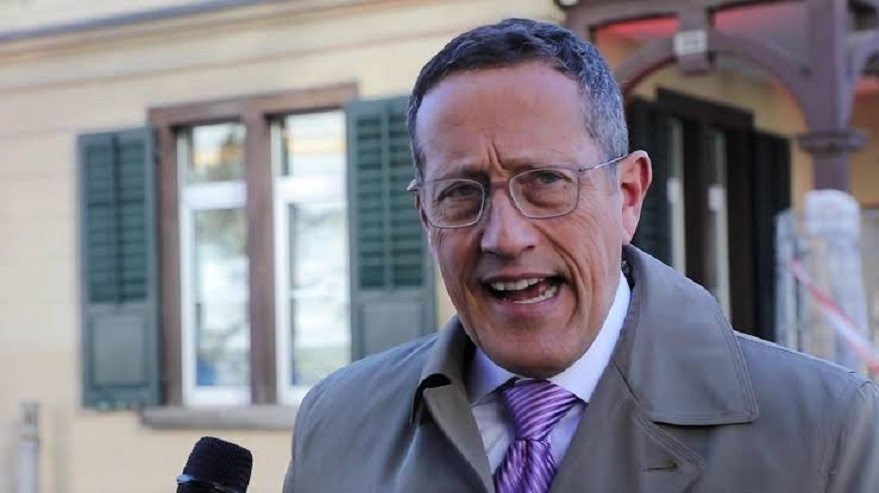
 Feature/OPED6 years ago
Feature/OPED6 years agoDavos was Different this year
-
Travel/Tourism9 years ago
Lagos Seals Western Lodge Hotel In Ikorodu
-

 Showbiz3 years ago
Showbiz3 years agoEstranged Lover Releases Videos of Empress Njamah Bathing
-
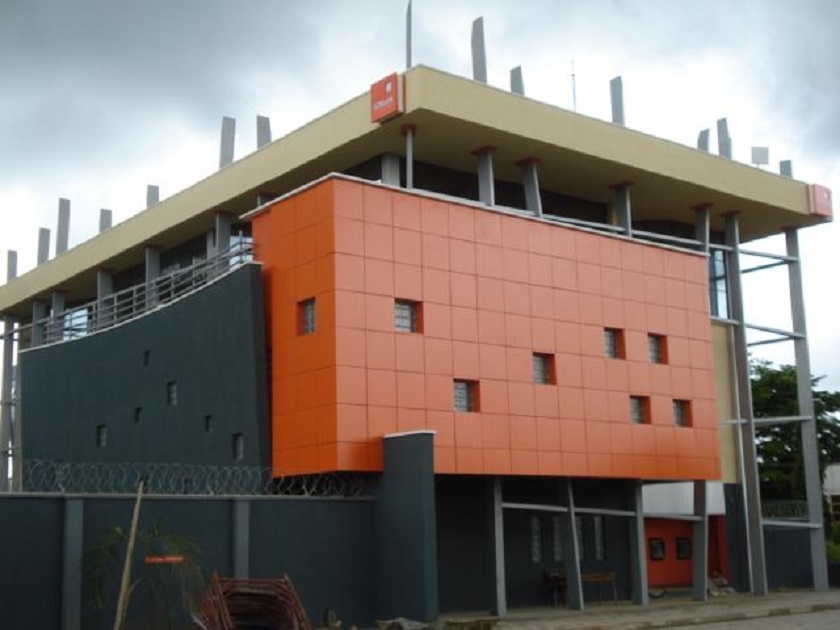
 Banking7 years ago
Banking7 years agoSort Codes of GTBank Branches in Nigeria
-
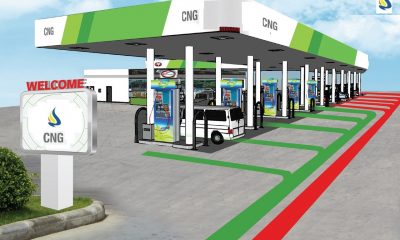
 Economy3 years ago
Economy3 years agoSubsidy Removal: CNG at N130 Per Litre Cheaper Than Petrol—IPMAN
-

 Banking3 years ago
Banking3 years agoFirst Bank Announces Planned Downtime
-
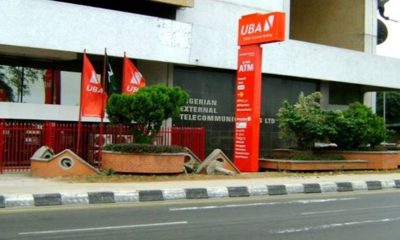
 Banking3 years ago
Banking3 years agoSort Codes of UBA Branches in Nigeria
-

 Sports3 years ago
Sports3 years agoHighest Paid Nigerian Footballer – How Much Do Nigerian Footballers Earn





